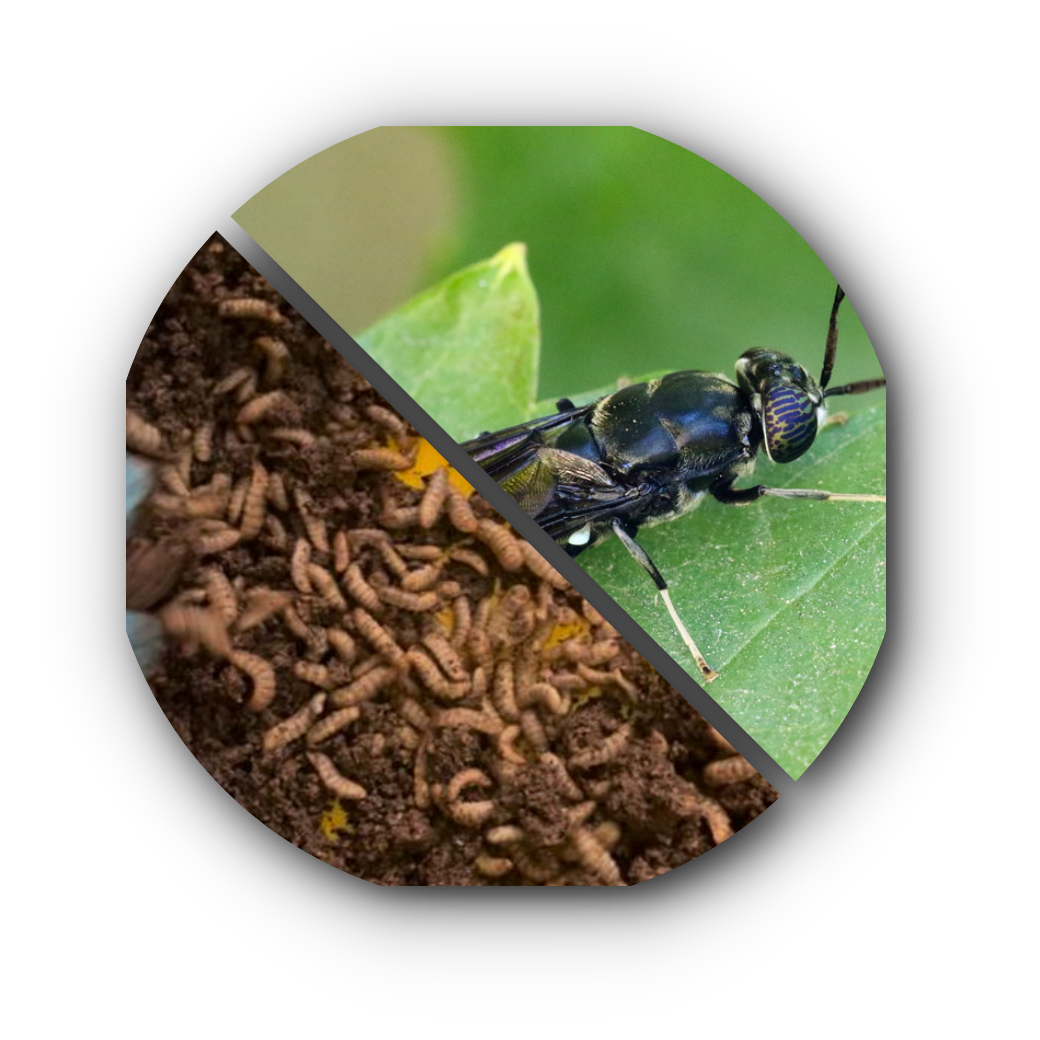Black Soldier Fly
Antimicrobial Peptides from Black Soldier Flies: A Promising Alternative to Livestock Antibiotics
Introduction
A 2021 review paper published in the journal Animals (ISSN 2076-2615) by Xia et al. (2021) explores the potential of antimicrobial peptides (AMPs) derived from black soldier fly larvae (BSFL) as sustainable alternatives to conventional antibiotics in livestock farming.
Key Findings From the Research
The paper highlights that BSFL produce several types of AMPs, including defensins and cecropins, which exhibit broad-spectrum activity against pathogens like MRSA and E. coli. These peptides target bacterial membranes, reducing the likelihood of resistance development compared to traditional antibiotics. The authors note that BSFL AMPs have shown promising results in livestock trials, improving growth performance and reducing diarrhea in poultry and swine. Additionally, the paper emphasizes the dual benefit of BSFL systems, which not only produce AMPs but also valorize organic waste into nutrient-rich biomass. Challenges such as large-scale production costs, peptide stability, and regulatory hurdles are also discussed.
Why Is This Important
This research shows the transformative potential of BSFL AMPs in addressing two critical issues in animal agriculture: antibiotic resistance and sustainable feed production. For the feed industry, BSFL-derived AMPs could revolutionize animal health management by providing a natural, resistance-proof alternative to antibiotics. However, widespread adoption will require solutions to production bottlenecks and clearer regulatory pathways. The integration of BSFL systems into existing waste management frameworks could further enhance their economic viability, creating a circular model that benefits both farmers and the environment.
Reference
Xia, J., Ge, C., & Yao, H. (2021). Antimicrobial Peptides from Black Soldier Fly (Hermetia illucens) as Potential Antimicrobial Factors Representing an Alternative to Antibiotics in Livestock Farming. Animals, 11(7), 1937. https://doi.org/10.3390/ani11071937
